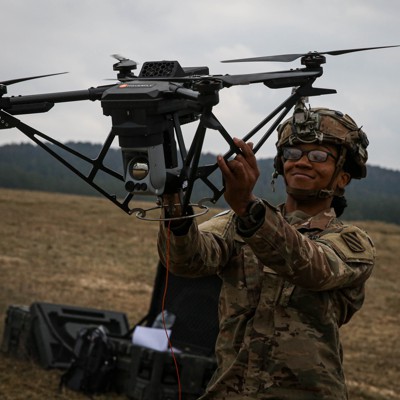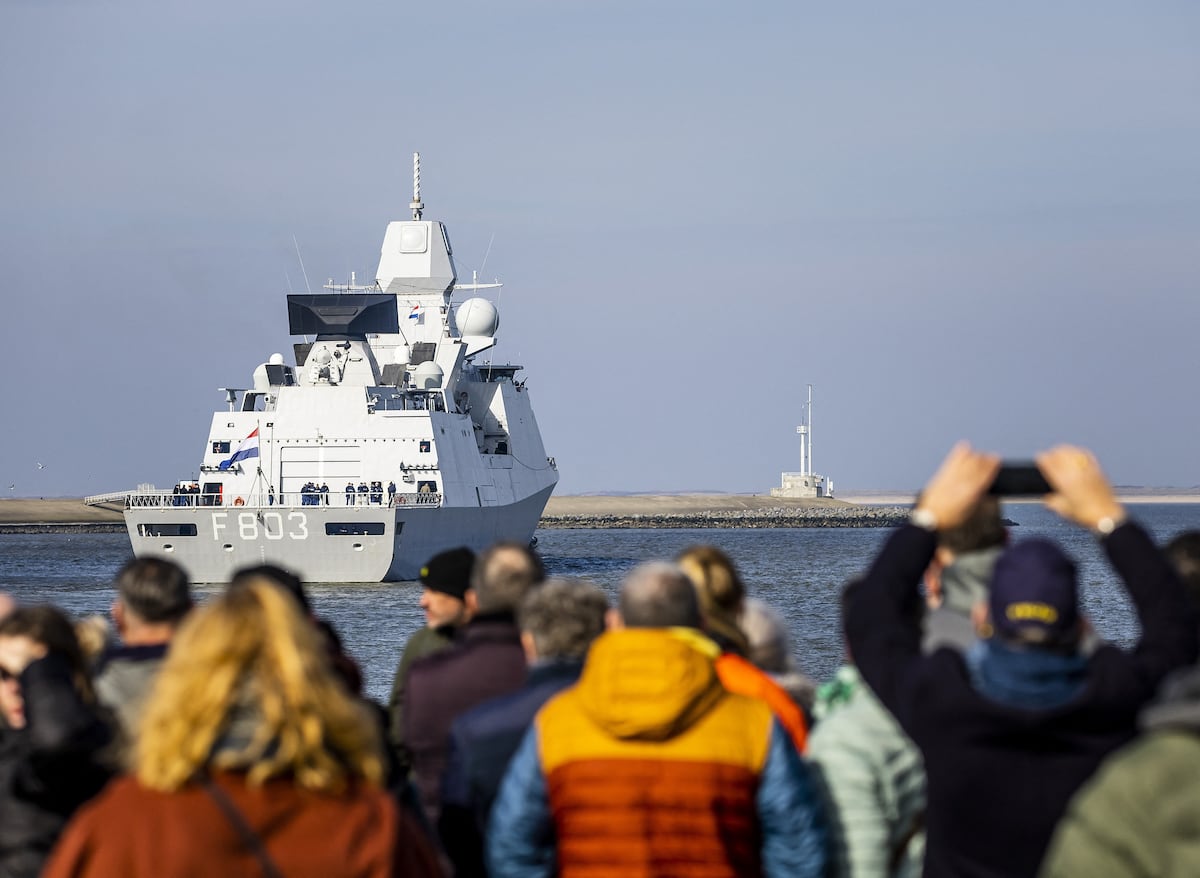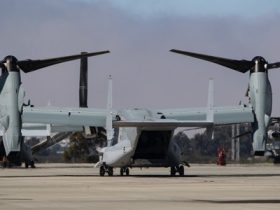The Army is buying hundreds of small drones as it starts to equip its infantry with warfare’s latest must-have weapon, but that’s not nearly enough. The experience of current units suggests the service will need to buy thousands per year just to meet training objectives, let alone go to war.
In February, Army Chief of Staff Randy George announced the “transforming-in-contact” effort, in which would send new kit to three infantry brigades that would evaluate it. The strategy focuses on technologies the Army sees as important for the future of warfare, including improved communications, electronic warfare capabilities, and small drones.
The three units are the 101st Airborne’s 2nd Brigade, the 25th Infantry Division’s 2nd Brigade, and 10th Mountain 3rd Brigade. The Army may yet add more; the 3rd Infantry Division, for example, is hastening to apply lessons from these brigades’ experience.
Alongside the new tech have come new formations designed to use the drones for maximum effectiveness.
In the 101st Airborne, drone-focused units include the Multifunctional Reconnaissance Company, or MFRC, a formation designed to dwell deep behind an enemy’s lines and observe their movement. The company consists of three reconnaissance platoons, as well as an electronic warfare platoon and a robotics and autonomous systems, or RAS, platoon.
Each reconnaissance unit comes with up to six short-range drones, while the robotics and autonomous systems platoon fly heavier, longer-range drones like Performance Drone Works C100. The drones are used for reconnaissance, artillery fire correction, and light bombing.
In addition to the MFRC, the 101st’s three battalions also have one new drone platoon apiece.. The platoons are staffed by seven operators for their 12 short-range drones, or a little under two drones per operator.
In total, that’s as many as 54 short-range drones, plus the heavier systems used by the RAS platoon. That’s much more than units previously fielded, but even more may be needed to make up for losses in training.
During intensive training, like that seen during rotation in a combat training center, one drone platoon commander said he expected that at least one drone every other day would fall victim to operator or mechanical error. While sturdy, drones are prone to any number of accidents: an operator may accidentally clip a tree branch, the drone could lose signal, or the battery could drain before the drone gets back to base.
Other brigades are fielding similarly large numbers of drones, and are also grappling with malfunctions.
In 2022, the Army’s 25th Infantry Division’s 2nd Brigade began experimenting with drone training and acquisition even before it was selected as a “transforming-in-contact” brigade this year.
After months of effort, the unit’s rifle platoons are now “fully fielded” with between five and seven small drones per platoon, said brigade commander Col. Graham White by email in August. That’s a total of 189 small drones.
White said that it was a “safe assumption” that around 25 percent of drones would irretrievably break or or be lost during intensive training missions, like those in a combat training center. White is now chief of staff of the 25th Infantry Division. Overall, he said he expected that all of a platoon’s drones would “break, crash or require minor repair” over an expected five year life cycle.
White added that 3D printing and in-house repair systems and technicians were therefore key for keeping drone units operational. He said they were “gaining ground in both areas.” At an September event held by think tank CSIS, Army acquisition head Doug Bush said that the service had recently gotten approval from Congress to reprogram money to give units 3D printers to print drone parts.
The numbers deployed by the 101st Airborne Division and 25th Infantry Division, in turn, suggests the Army will need to start buying drones by the thousands.
If all 59 of the Army’s active and National Guard brigades follow the lead of the 101st Airborne, for example, over 3,000 short-range drones would be required to equip their platoons. To make up for training losses, the Army will also need to regularly buy replacements. Assuming a rate of 25 percent lost per year during intensive training, the Army might need to purchase another 1,000 drones or so per year.
This number may vary by brigade type, which could increase or decrease drone needs. An armored brigade, for example, can more easily take advantage of tethered drones, which can be connected to a vehicle and therefore less easily lost.
That number does not include a number of other drones the Army is buying or considering.
In September, the Army chose Anduril’s Ghost X and Performance Drone Works’ C-100 to field as their company-level drone. The Army is also working on plans to acquire long-range drones, first-person-view loitering munitions, and tethered drones.
It also does not include the number of drones needed in an actual war. Russia and Ukraine both lose thousands of drones per month to electronic warfare, bullets, and missiles.
Industry observers could see some concrete steps in the coming months. In December and January, Teal and Skydio, respectively, announced they were competing for the second tranche of the Army’s Short Range Reconnaissance program.
The Army is moving relatively swiftly to buy drones. The requirement for the company-level drone, for example, was approved in June 2023, with an award for tranche one in September 2024.
And the Army has signaled it wants to buy in quantity. Speaking at a Defense News event in September, Bush said that the Army was seeking to buy drones in the same quantity it buys ammunition.
“We need them potentially at a very large scale and very quickly,” Bush said.
Read the full article here








Leave a Reply